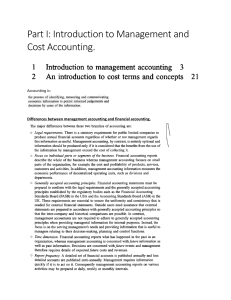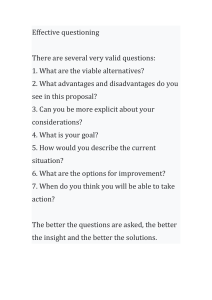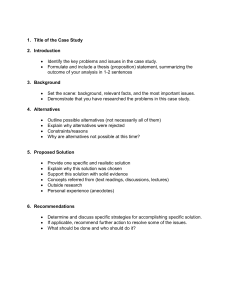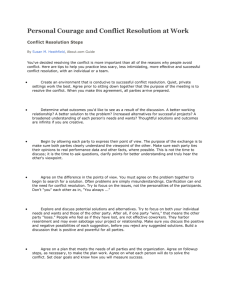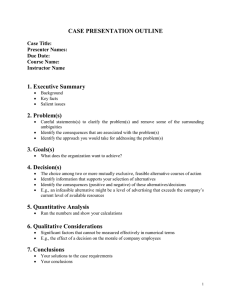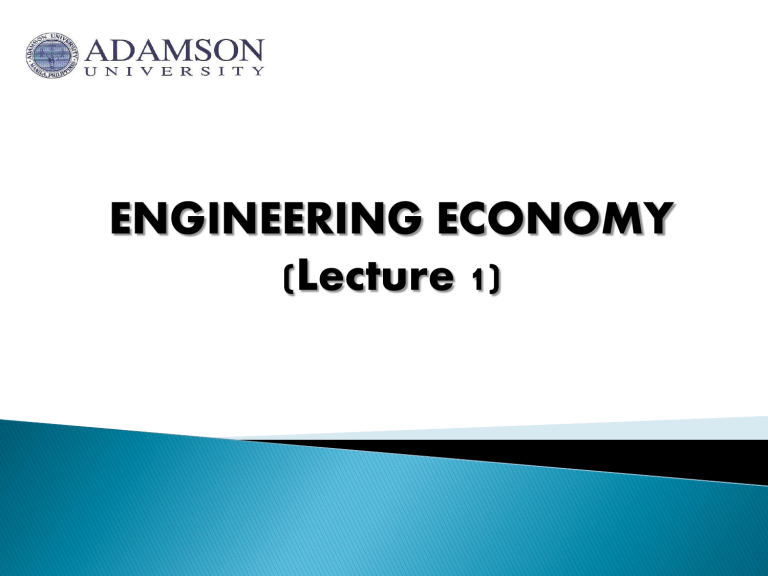
ENGINEERING ECONOMY (Lecture 1) WHAT IS ECONOMICS? • The study of how limited resources is used to satisfy unlimited human wants. • The study of how individuals and societies choose to use scarce resources that nature and previous generations have provided. WHAT IS ENGINEERING ECONOMY? is a discipline concerned with the systematic evaluation of the costs and benefits of the proposed business projects and ventures. Its objective is to choose which among the alternative course of action will give the maximum benefit at the least cost. WHAT IS ENGINEERING ECONOMY? Engineering economy involves formulating, estimating, and evaluating the expected economic outcomes of alternatives designed to accomplish a defined purpose. Mathematical techniques simplify the economic evaluation of alternatives. Other terms that means the same are engineering economic analysis, capital allocation study, economic analysis ENGINEERING ECONOMIC ANALYSIS PROCEDURE 1. Problem recognition, formulation, and evaluation. 2. Development of the feasible alternatives. 3. Development of the cash flows for each alternative. 4. Selection of a criterion ( or criteria). 5. Analysis and comparison of the alternatives. 6. Selection of the preferred alternative. 7. Performance monitoring and post-evaluation results. PRINCIPLES OF ENGINEERING ECONOMY 1. Develop the Alternatives; 2. Focus on the Differences; 3. Use a Consistent Viewpoint; 4. Use a Common Unit of Measure; 5. Consider All Relevant Criteria; 6. Make Uncertainty Explicit; 7. Revisit Your Decisions 1. DEVELOP THE ALTERNATIVES The final choice (decision) is among alternatives. The alternatives need to be identified and then defined for subsequent analysis. 2. FOCUS ON THE DIFFERENCES Only the differences in expected future outcomes among the alternatives are relevant to their comparison and should be considered in the decision. 3. USE A CONSISTENT VIEWPOINT The prospective outcomes of the alternatives, economic and other, should be consistently developed from a defined viewpoint (perspective). 4. USE A COMMON UNIT OF MEASURE Using a common unit of measurement to enumerate as many of the prospective outcomes as possible will make easier the analysis and comparison of alternatives. 5. CONSIDER ALL RELEVANT CRITERIA Selection of a preferred alternative (decision making) requires the use of a criterion (or several criteria). The decision process should consider the outcomes enumerated in the monetary unit and those expressed in some other unit of measurement or made explicit in a descriptive manner. 6. MAKE UNCERTAINTY EXPLICIT Uncertainty is inherent in projecting (or estimating) the future outcomes of the alternatives and should be recognized in their analysis and comparison. 7. REVISIT YOUR DECISIONS Improved decision making results from an adaptive process; to the extent practicable, the initial projected outcomes of the selected alternative should be subsequently compared with actual results achieved. ENGINEERING ECONOMY AND THE DESIGN PROCESS An engineering economy study is accomplished using a structured procedure and mathematical modeling techniques. The economic results are then used in a decision situation that involves two or more alternatives and normally includes other engineering knowledge and input. ACCOUNTING AND ENGINEERING ECONOMY STUDIES Modern cost accounting may satisfy any or all of the following objectives: 1. To determine the cost of products or services 2. To provide a rational basis for pricing goods or services 3. To provide a means for controlling expenditures 4. To provide information on which operating decisions may be based and the results evaluated GROUP ACTIVITY CONSIDER YOURSELF AS A CUSTOMER AND THINK OF A PROBLEM THAT YOU’VE ENCOUNTERED WITH A CERTAIN COMPANY. NOW, IF YOU ARE GOING TO BE THE PROJECT MANAGER OF THAT COMPANY, HOW ARE YOU GOING TO RESOLVE THAT PROBLEM USING THE PRINCIPLES OF ENGINEERING ECONOMY? 1. STATE YOUR PROBLEM 2. CREATE YOUR SMART OBJECTIVES 3. DEVELOP ALTERNATIVES AND FOCUS ON DIFFERENCES
